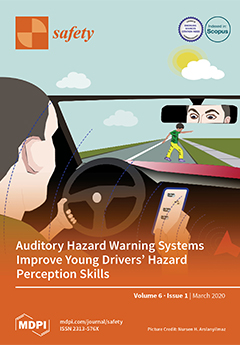Background: This research sought to understand the perspective of mineworkers regarding incident investigations, with the objective of identifying incident investigations improvement opportunities. First, through interviews, the research sought to identify the causal factors considered during investigations and the reasons for conducting investigations in
[...] Read more.
Background: This research sought to understand the perspective of mineworkers regarding incident investigations, with the objective of identifying incident investigations improvement opportunities. First, through interviews, the research sought to identify the causal factors considered during investigations and the reasons for conducting investigations in the Ghanaian mining industry. Secondly, through questionnaire surveys, the study focused on understanding the extent to which a large sample of mineworkers considered the identified causal factors and investigation reasons relevant and applicable in their mine.
Method: Data were collected from 41 participants through interviews and 659 respondents through surveys, and the data were analyzed through thematic, content, and statistical analyses, including descriptive statistics, one-way ANOVA, and correlation analysis.
Result: The interviews led to the identification of five and nine categories of incident causal factors and reasons for investigating incidents, respectively. The results suggested a focus on workers’ unsafe acts as the main incident causal factor and identifying the person who caused the incident as one of the major reasons for investigating incidents, as these two factors where the modal choice from both the interviews and survey across all five mines. The results further showed that concerning the accident causal factors and the reasons for investigating incidents, no significant difference was observed between the perspectives of mineworkers involved in investigations and mineworkers with no investigation responsibilities.
Conclusion: It can be concluded from the results that talking to ordinary mineworkers does not generate innovative safety responses in this context, as the workers believe whatever they are taught, without critiquing it. Again, the focus on workers’ behavior as an accident causal factor is an indication of single-loop learning in contrast to double-loop learning, and its implication as well as opportunities to strengthen incident investigation focusing on improving organizational safety have been discussed.
Full article





